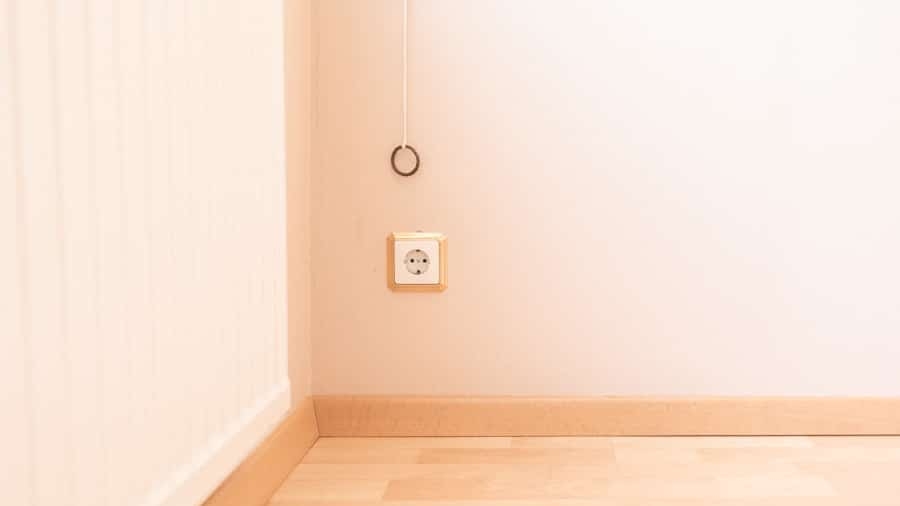In the rapidly evolving landscape of technology, smart sensors have emerged as pivotal components in enhancing safety and security within residential environments. These devices are designed to detect specific environmental changes and respond accordingly, often communicating with other systems to provide real-time data and alerts.
By leveraging the Internet of Things (IoT), these sensors can offer unprecedented levels of awareness and control, allowing individuals to respond proactively to potential threats. Smart sensors encompass a wide range of applications, from monitoring temperature and humidity to detecting motion and sound. Their versatility makes them suitable for various scenarios, particularly in the realm of home safety.
As urbanization increases and climate change poses new challenges, the demand for innovative solutions to protect homes from natural disasters and intrusions has never been greater. This article delves into the specific applications of smart sensors in fire and flood protection, their benefits, operational mechanisms, integration with existing security systems, selection criteria for homeowners, and future trends in this dynamic field.
Key Takeaways
- Smart sensors are advanced devices that can detect and respond to changes in their environment, making them ideal for home protection.
- Smart sensors can be used for fire protection by detecting smoke and heat, and for flood protection by sensing water leaks and rising water levels.
- Using smart sensors for home protection can provide benefits such as early detection of potential hazards, real-time monitoring, and remote access to alerts and notifications.
- Smart sensors work by using various technologies such as infrared, ultrasonic, and wireless communication to detect and transmit information about environmental changes.
- Integrating smart sensors with home security systems can provide a comprehensive approach to home protection, offering a more robust and reliable solution.
Smart Sensors for Fire Protection
Advanced Technologies for Fire Detection
Smart sensors designed for fire detection utilize advanced technologies such as heat sensors, smoke detectors, and even gas leak detectors to provide comprehensive monitoring. These devices can identify the early signs of a fire, such as an increase in temperature or the presence of smoke particles in the air.
Real-Time Alerts and Notifications
When a potential fire hazard is detected, these sensors can trigger alarms, send notifications to homeowners’ smartphones, and even alert local emergency services. One notable example of smart fire protection technology is the Nest Protect smoke and carbon monoxide detector. This device not only detects smoke but also provides voice alerts that specify the type of danger present.
Enhanced Safety and Peace of Mind
It connects to a smartphone app, allowing users to monitor their home remotely. In addition to traditional alarm functions, smart fire sensors can also integrate with other home automation systems, enabling features such as automatic shut-off of HVAC systems to prevent smoke from spreading throughout the house. This level of integration enhances overall safety and provides peace of mind for homeowners.
Smart Sensors for Flood Protection

Flooding is another significant threat that can cause extensive damage to homes and property. Smart sensors designed for flood protection typically include water level sensors and moisture detectors that monitor areas prone to flooding, such as basements or near water sources. These devices can detect rising water levels or excessive moisture in the air, providing early warnings that allow homeowners to take preventive measures before significant damage occurs.
For instance, the GROVE Water Level Sensor is an example of a device that can be used in flood-prone areas. It measures water levels and can be programmed to send alerts when certain thresholds are reached. This capability allows homeowners to respond quickly by moving valuables to higher ground or activating sump pumps to mitigate water accumulation.
Additionally, some smart flood sensors can integrate with home automation systems to automatically close valves on water supply lines or activate drainage systems when flooding is detected, further minimizing potential damage.
Benefits of Using Smart Sensors for Home Protection
The adoption of smart sensors for home protection offers numerous advantages that extend beyond mere detection capabilities. One of the most significant benefits is the ability to receive real-time alerts directly on smartphones or other devices. This immediacy allows homeowners to respond promptly to emergencies, whether they are at home or away.
For example, receiving an alert about smoke detection while at work enables a homeowner to take swift action or notify emergency services without delay. Moreover, smart sensors contribute to a more comprehensive approach to home security by integrating with other smart devices. For instance, when a flood sensor detects rising water levels, it can trigger a smart home system to turn off electrical appliances in affected areas, reducing the risk of electrical hazards.
This interconnectedness not only enhances safety but also promotes energy efficiency by allowing homeowners to monitor and control their energy usage more effectively.
How Smart Sensors Work
The operational mechanics of smart sensors are rooted in their ability to collect data from their environment and process it using embedded algorithms. Most smart sensors are equipped with various types of transducers that convert physical phenomena—such as temperature changes, humidity levels, or motion—into electrical signals. These signals are then analyzed by microcontrollers within the sensor, which determine whether specific thresholds have been crossed that warrant action.
For example, a smart smoke detector uses an optical sensor that detects smoke particles in the air. When smoke is present, the sensor’s internal circuitry triggers an alarm and sends a notification through Wi-Fi or Bluetooth to connected devices. The data collected by these sensors can also be stored in cloud-based systems for further analysis, allowing homeowners to review historical data on environmental conditions in their homes.
This capability not only aids in immediate response but also helps identify patterns that could inform future safety measures.
Integration of Smart Sensors with Home Security Systems

Enhanced Response Times and Comprehensive Security
For instance, when a motion sensor detects movement outside the home during unusual hours, it can trigger outdoor lights and alert indoor cameras to start recording. Simultaneously, if a fire sensor detects smoke, it can activate the security system’s alarm while notifying emergency services automatically.
Seamless Communication and Interconnectedness
This interconnectedness not only enhances response times but also provides homeowners with a comprehensive view of their property’s security status through centralized apps or control panels.
A Unified Security Network
The integration of smart sensors with existing home security systems enables a unified security network where different devices work together to provide a holistic approach to home protection.
Choosing the Right Smart Sensors for Your Home
Selecting the appropriate smart sensors for home protection requires careful consideration of various factors tailored to individual needs and circumstances. Homeowners should first assess their specific vulnerabilities based on geographical location and environmental risks—such as susceptibility to floods or wildfires—and choose sensors accordingly. For instance, those living in flood-prone areas may prioritize water level sensors over other types.
Additionally, compatibility with existing home automation systems is crucial when selecting smart sensors. Homeowners should ensure that the devices they choose can integrate seamlessly with their current security setup or any planned upgrades.
Future Developments in Smart Sensor Technology for Home Protection
The future of smart sensor technology holds exciting possibilities that promise to further enhance home protection capabilities. As artificial intelligence (AI) continues to advance, we can expect smarter algorithms that improve the accuracy of threat detection while reducing false alarms. For example, AI-driven analytics could enable sensors to learn from environmental patterns over time, allowing them to differentiate between normal activities and genuine threats more effectively.
Moreover, advancements in sensor miniaturization and energy efficiency will likely lead to more compact devices that require less power while maintaining high performance levels. This could result in longer-lasting battery life for wireless sensors and increased deployment options throughout homes without compromising aesthetics or functionality. Additionally, as 5G technology becomes more widespread, the speed and reliability of data transmission will enhance real-time monitoring capabilities, allowing homeowners to receive instant updates regardless of their location.
In conclusion, smart sensors represent a transformative force in home protection strategies. Their ability to detect environmental changes and integrate with existing security systems provides homeowners with enhanced safety measures against various threats such as fires and floods. As technology continues to evolve, we can anticipate even more sophisticated solutions that will redefine how we protect our homes and loved ones in an increasingly unpredictable world.
In addition to enhancing home fire and flood protection with smart sensors, digital artists can also benefit from the latest technology. Check out this article on the best free drawing software for digital artists in 2023 to unlock your creative potential. And if you’re looking for a versatile device to work on your art projects, consider the Samsung Galaxy Chromebook. Plus, if you’re a tech-savvy individual who likes to customize your devices, find out if Samsung smartwatches work with rooted phones in this article: Do Samsung Smartwatches Work with Rooted Phones?
FAQs
What are smart sensors?
Smart sensors are devices that can detect and measure physical input from the environment and then process and transmit that data. They are often connected to a network and can be controlled remotely.
How do smart sensors enhance home fire protection?
Smart sensors can detect smoke and heat, and can alert homeowners and emergency services to potential fires. They can also be integrated with home automation systems to automatically shut off appliances or HVAC systems in the event of a fire.
How do smart sensors enhance home flood protection?
Smart sensors can detect water leaks and rising water levels, and can alert homeowners to potential flooding. They can also be integrated with home automation systems to shut off water supply in the event of a leak.
What are the benefits of using smart sensors for home fire and flood protection?
The benefits of using smart sensors for home fire and flood protection include early detection, remote monitoring and control, and integration with other smart home devices for a comprehensive home protection system.
How do smart sensors contribute to overall home safety?
Smart sensors contribute to overall home safety by providing early detection of potential fire and flood hazards, allowing for quick response and mitigation of these risks. They also provide peace of mind for homeowners by offering remote monitoring and control capabilities.

